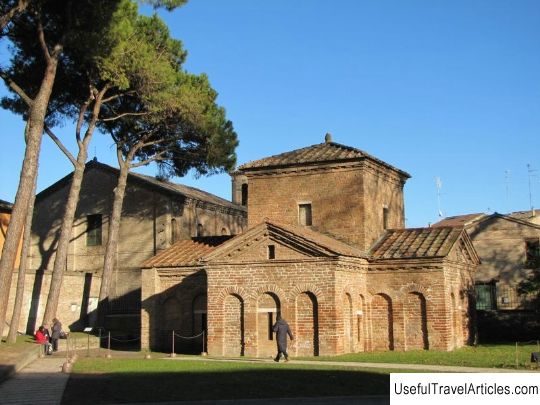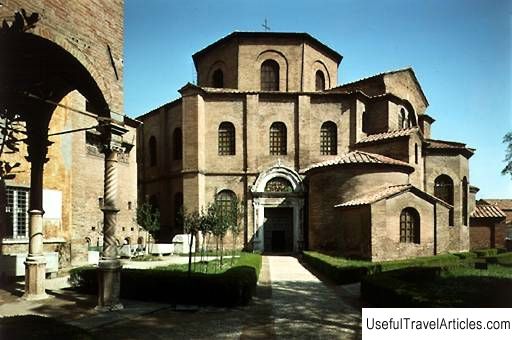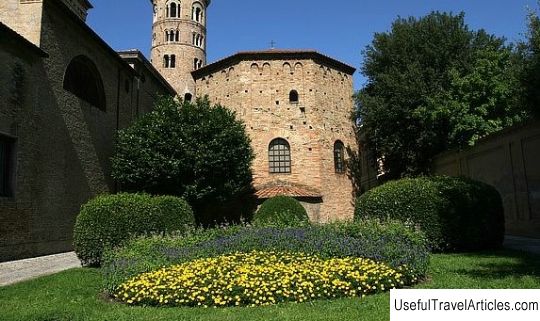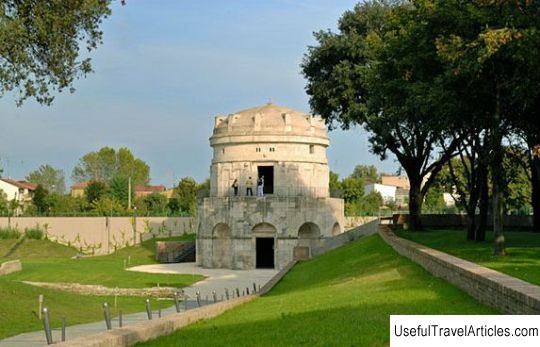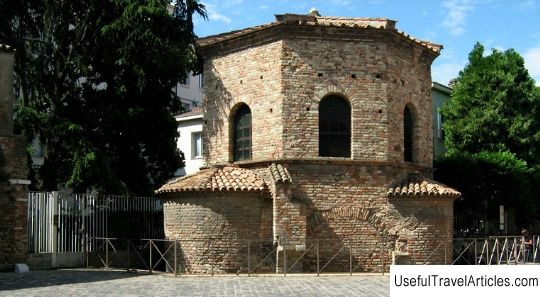Early Christian and Byzantine monuments in Ravenna, Italy
Rating: 8,3/10 (496 votes)  Ravenna is an ancient city located in the Emilia-Romagna region. The city is home to many monuments of early Christian and Byzantine architecture. The Mausoleum of Galla Placidia is a cross-domed building located next to the Church of San Vitale. For a long time, the mausoleum served as an oratorio at the Basilica of Santa Croce. The construction of the mausoleum dates back to the second quarter of the 5th century. The building is decorated with ancient mosaics. The mausoleum was built using the Lombard brickwork technique. The building is made in the form of a Latin cross. The mausoleum is famous for its magnificent mosaic decoration. Mosaic plots organically form a single whole. The Orthodox Baptistery, decorated with Byzantine mosaics, is the oldest building in the city. The construction of the baptistery was carried out on the foundations of the Roman baths at the end of IV – early 5th century. In the second half of the 5th century, the baptistery was decorated with mosaics. The mosaic composition of the baptistery is based on the theme of Heavenly Jerusalem. The baptism of Jesus Christ was recreated in the domed part. In the central part of the building there is an octagonal font made of porphyry and marble. In the 16th century, the baptismal font was significantly altered. Arian Baptistery was erected by order of Theodoric the Great, at the turn of the V – VI centuries. In 561, after the condemnation of Arianism, the baptistery was turned into an oratory of the Virgin Mary. From the 18th century until 1914, the building was a private property. The interior of the building has well preserved mosaics depicting scenes of the Baptism of Christ and the Apostles. The mosaic of the central medallion of the dome contains an episode of the baptism of Christ by John the Baptist. Sant Apollinare Nuovo is an early Christian basilica built at the turn of the V – VI centuries by order of Theodoric the Great. The interior of the basilica is decorated with early Byzantine mosaics, located in three tiers: the upper – evangelical stories, medium – images of saints and prophets, lower – processions of martyrs and virgins. Basilica of San Vitale is the most important monument of Byzantine art in Western Europe. The construction of the basilica was carried out in 527. The basilica mosaic was intended to demonstrate the power and great taste of Justinian to the Western world. Today, the mosaic of the Basilica of San Vitale is a rare example of early Christian monumental painting. The Archbishop's Chapel is the home church of the Equal Bishops, built at the turn of the V – VI centuries. The interior of the basilica is richly decorated with mosaics depicting mythological animals and birds. Mausoleum of Theodoric the Great was built by King Theodoric as a personal tomb. The tomb has two tiers: on the upper level is the sarcophagus of the ruler, and the lower one was probably intended for members of his family. Sant'Apollinare in Classe is a monument early Byzantine art. The construction of the basilica dates back to the second quarter of the 6th century. The interior of the building is decorated with the latest Ravens mosaic from the Justinian period.     We also recommend reading Cinque Terre National Park in Italy Topic: Early Christian and Byzantine monuments in Ravenna, Italy. |
